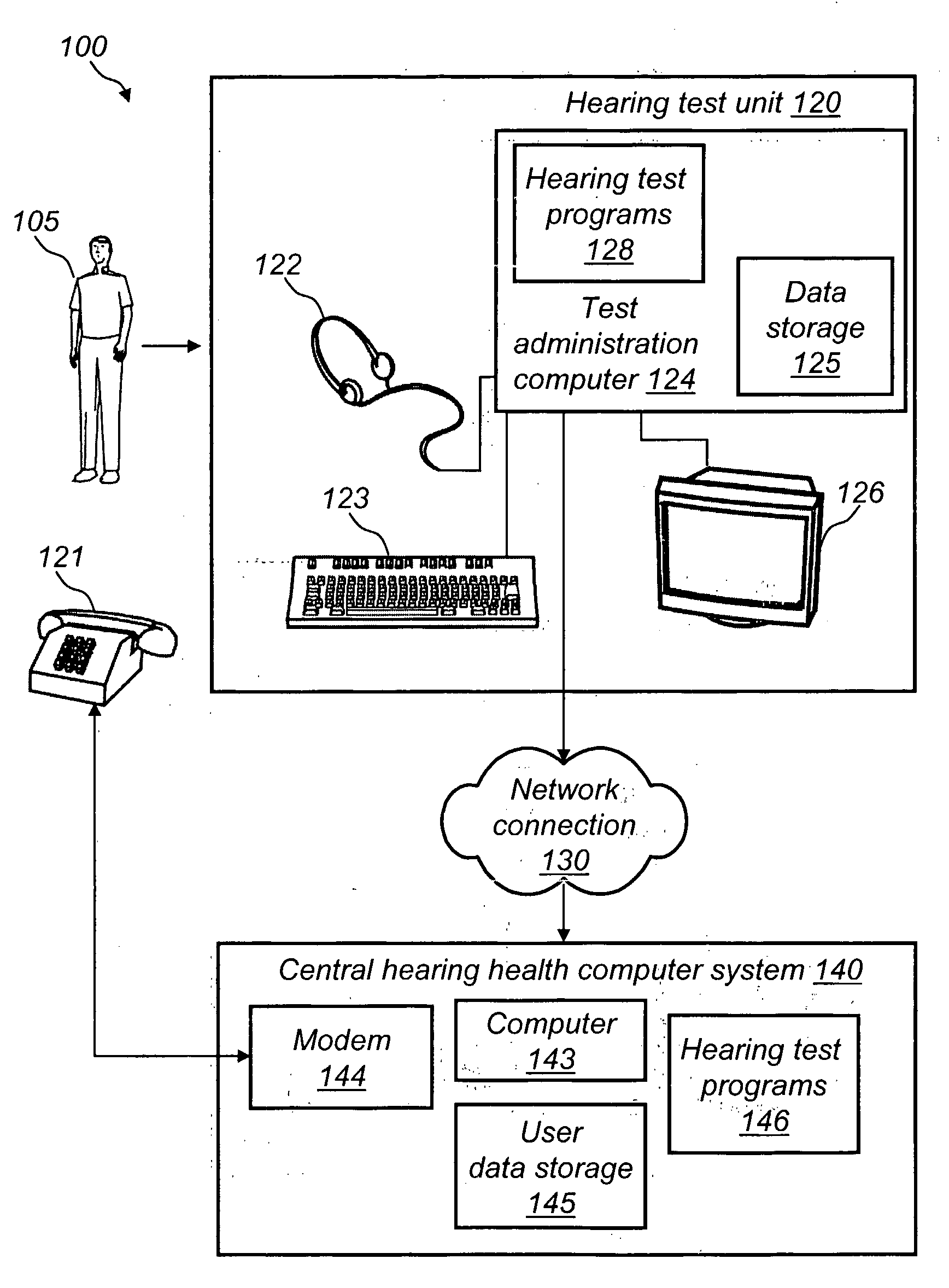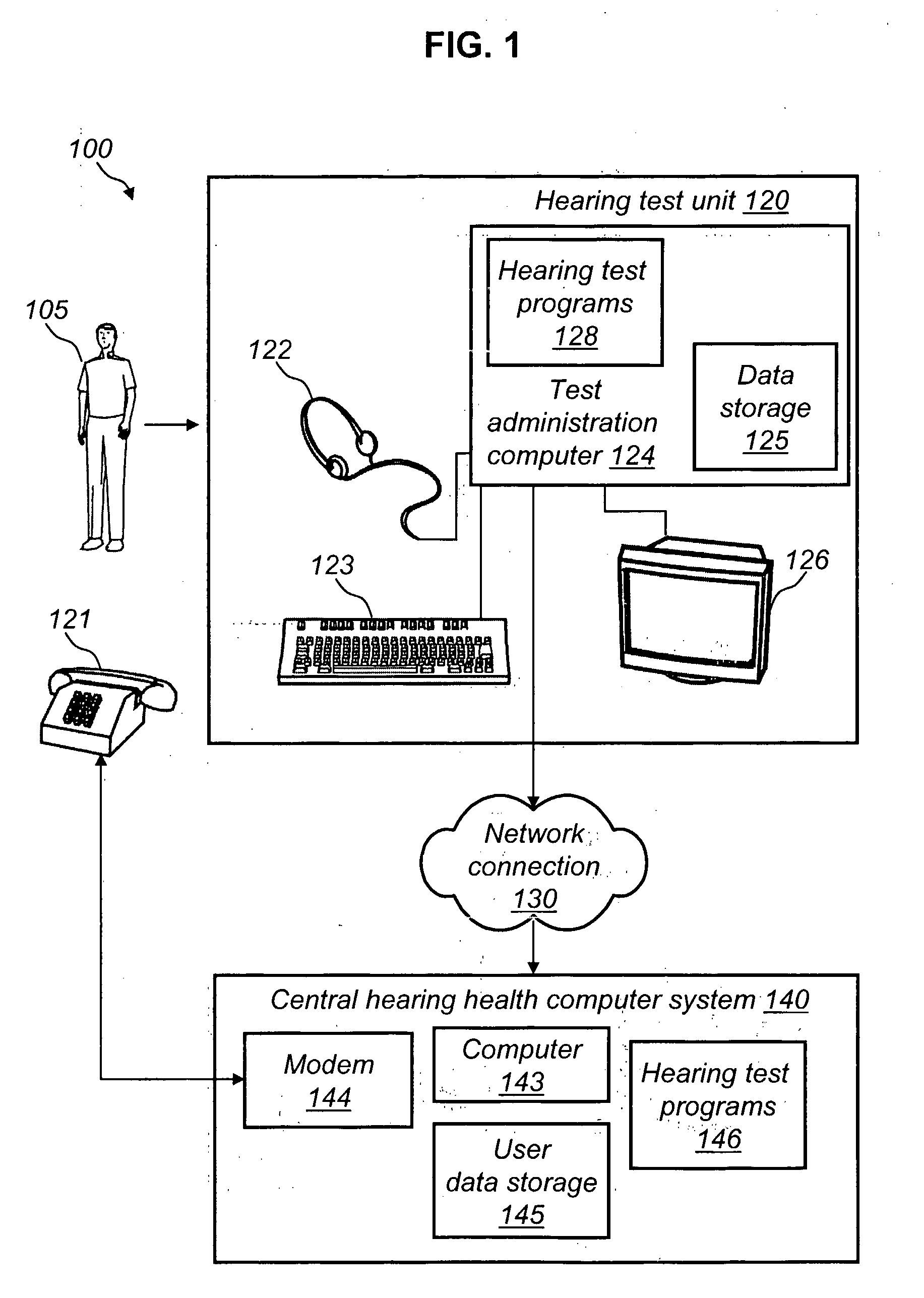System for and Method of Conveniently and Automatically Testing the Hearing of a Person
a technology of hearing testing and automatic testing, applied in the field of hearing testing systems, can solve the problems of repeated exposure to very loud noise, painless hearing testing, and most people not even knowing they have a hearing loss
- Summary
- Abstract
- Description
- Claims
- Application Information
AI Technical Summary
Benefits of technology
Problems solved by technology
Method used
Image
Examples
Embodiment Construction
[0038]FIG. 1 is a high-level diagram of a preferred system 100 including a user 105, a hearing test unit 120, a network connection 130, a central hearing health computer system 140, and a telephone 121.
[0039]User 105 represents the individuals (mass market) on whom a hearing test is to be administered. This is generally any and all individuals but, more specifically, the more than 10% of the population (e.g., 25 million Americans) that have hearing loss, including one out of four people older than 65.
[0040]Network connection 130 is a standard Internet connection or, alternatively, is a WAN, LAN, etc. Network connection 130 is the communication infrastructure between hearing test unit 120 and central hearing health computer system 140. Network connection 130 allows central hearing health computer system 140 to remotely administer hearing aid tests, thereby giving central hearing health computer system 140 an opportunity to reach a large number of individuals.
[0041]Telephone 121 is a ...
PUM
 Login to View More
Login to View More Abstract
Description
Claims
Application Information
 Login to View More
Login to View More - R&D
- Intellectual Property
- Life Sciences
- Materials
- Tech Scout
- Unparalleled Data Quality
- Higher Quality Content
- 60% Fewer Hallucinations
Browse by: Latest US Patents, China's latest patents, Technical Efficacy Thesaurus, Application Domain, Technology Topic, Popular Technical Reports.
© 2025 PatSnap. All rights reserved.Legal|Privacy policy|Modern Slavery Act Transparency Statement|Sitemap|About US| Contact US: help@patsnap.com



